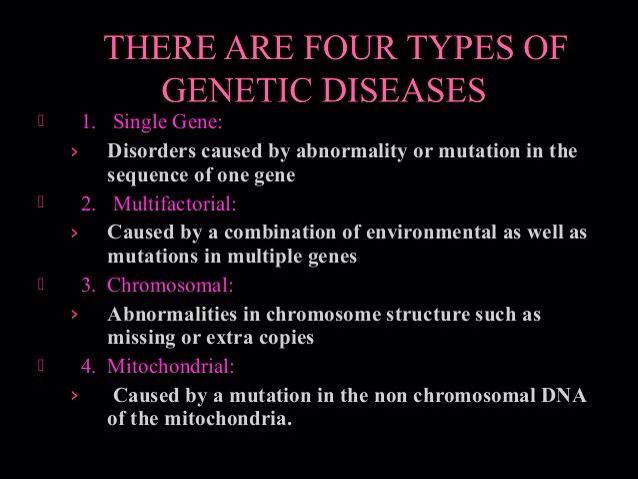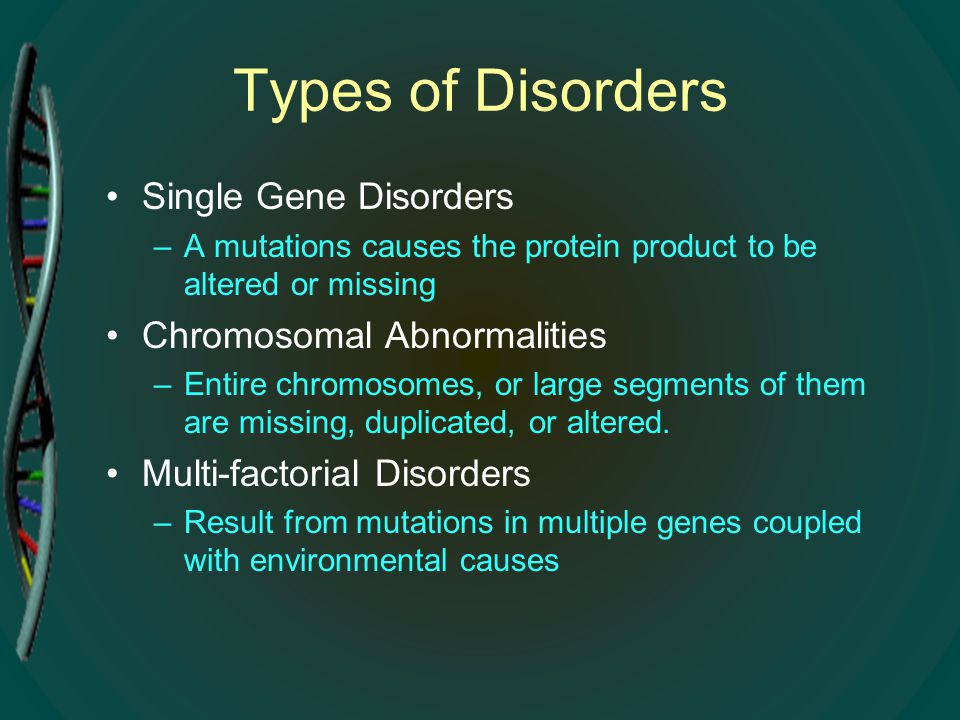Types of Genetic Diseases

A genetic disorder occurs when a gene is altered. This disruption can be hereditary or spontaneous, and some genetic disorders cannot be prevented. Because they cannot be prevented, they can only be discovered when symptoms arise. This makes them extremely important to understand. Let’s look at some common examples. Read on to learn more about these illnesses. Here are some of the most common types: Single-Gene Disorders (SGMDs), Chromosomal Disorders (CD), and Complex Genetic Diseases.
Chromosome Disorders: These are disorders affecting the structures that contain genes and DNA. These may cause a person to have one or more chromosomes missing, or duplicated. Complex diseases: These occur when one or more genes malfunction. The causes for complex genetic diseases vary. Some are inherited from parents, while others are acquired during a lifetime. Some of these are caused by exposure to certain chemicals or by smoking.
X-Linking Disorders: X-linked disorders are caused by mutations in the X chromosome. These can be life-threatening, and the disease usually affects males more than females. Some examples of X-linked disorders include aicardi syndrome, Rett syndrome, and incontinentia pigmenti type 2. Unlike Y-chromosome diseases, X-linked disorders can also be caused by exposure to radiation or cancer-causing chemicals.
The most common type of hereditary genetic disease is sickle cell anemia. This disease is caused by a mutated gene on chromosome 11. People with sickle cell anemia have anemia and other complications caused by defective hemoglobin. Fragile X syndrome is a type of X-linked disorder caused by a chromosome mutation. Some people with fragile X syndrome have an intellectual disability or developmental disability.
Affected genes are called chromosomal disorders. A chromosomal disorder is caused by a mutation in one gene. There are over 7,000 genetic diseases caused by a single gene mutation. One gene can lead to a defective or missing protein. It can also affect multiple organs. The health website https://rubricadiarte.it/
warns that if you have a brother or sister with a rare genetic disease, the disease will affect the entire family.

Most genetic diseases are inherited. Even though they are hereditary, they are still often hereditary. These genetic disorders are often inherited through the parental chromosome. However, a genetic disorder can also be acquired. The most common type of mutation occurs in a single gene. Hereditary genes are called chromosomal diseases. Some of these disorders are inherited through the maternal chromosome.
A genetic disorder can be a result of a mutation in any one of the genes that are found in a person’s DNA. A mutation can be caused by a number of factors, and a gene may be responsible for a condition that is caused by a particular gene. In rare cases, the disease can be caused by a gene mutation or a chromosomal defect. It can be passed through a parent’s DNA.
A genetic disorder can be caused by a single gene or by a gene mutation. There are two major types of genetic disorders: single-gene and multi-gene. These are the most common types. A rare disease is a condition caused by a single mutation in a gene. A multi-gene disorder is a combination of genes. It may be due to an environment or lifestyle factors.
Some genetic disorders are inherited while others are acquired. In hereditary, a person can have multiple genetic diseases. Some of these conditions can be passed down through family history or from parent to child. These conditions can cause many problems. For example, Huntington’s disease affects one chromosome. Moreover, a single-gene disorder can affect one or both parents. While there are many different kinds of mutations in one person’s DNA, genetic disorders are common in all individuals.
There are about 9,000 known genetic diseases, most of them rare. Because of their heterogeneous basis and variable expression, identifying a specific gene is essential to determining their causes and developing treatments. Some diseases cause symptoms at birth and others develop over time. These diseases are categorized by their genetic makeup and the way they affect an individual. Some of these genetic defects affect children in the embryo. A diagnosis of this kind is not easy to make, but it is crucial for a child to be diagnosed.
